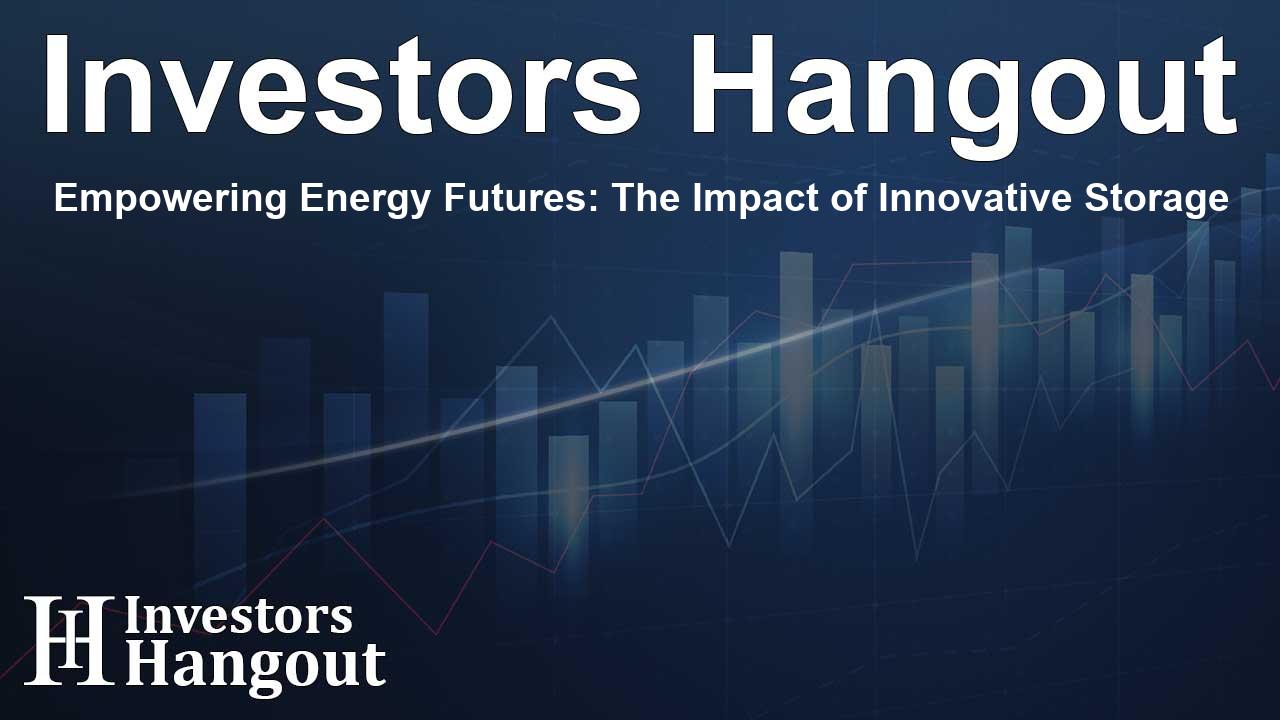Empowering Energy Futures: The Impact of Innovative Storage

The Future of Energy Storage: Innovations Leading the Way
The U.S. energy storage market is undergoing a remarkable transformation, with significant advancements paving the path for sustainable energy needs. As we look ahead, the need for effective energy storage solutions is becoming increasingly critical, particularly with advancements in grid-scale storage capabilities.
Meeting Growing Energy Demands
Recent data highlights that areas like the CAISO region have achieved monumental milestones, registering over 13GW in grid-scale energy storage. As energy providers evaluate new technologies, other regions are ramping up their storage capacity initiatives. Particularly, ERCOT is projected to see an increase in clean energy demand, nearly doubling by 2030 due to population growth, shifts in industrial needs, and extreme weather conditions. Energy storage systems are becoming the backbone of grid reliability, ensuring a stable supply of power.
The Role of Leading Innovations
At the forefront of these advancements are technologies like String PCS and Active Balancing, which are revolutionizing the industry. Speaking at a recent industry summit, a key industry figure emphasized that the success of energy storage strategies goes beyond mere technological innovations. It requires meticulous finance management and operational excellence to adapt to the dynamically changing grid landscape and forecasted investor expectations.
Understanding Active Balancing
Traditionally, energy storage systems depend on passive balancing methods. These systems often encounter issues related to voltage imbalances within battery packs, resulting in costly maintenance and unplanned downtimes. Operators frequently face challenges as these packs need to be balanced manually, which can accumulate costs potentially reaching hundreds of thousands of dollars over a span of years. Active Balancing technology addresses these challenges, keeping the cell voltage variation well within 5mV, thus providing improved performance while significantly diminishing maintenance time. This method yields not only a 4% increase in capacity but also extends the lifespan of systems by approximately 2.13% while reducing overall maintenance costs.
An Industry Game Changer
One notable example of this technology's application is found in CLOU's TX10 project, which set the benchmark by implementing a fully operational cell-to-rack active balancing system. This strategic move resulted in impressive market performance, with all participating sites earning spots among the top revenue-generating entities in ERCOT for the year, each bringing in an annual revenue of $196K per MW. This efficiency showcases the viability of new energy storage solutions in the competitive marketplace.
The Advantages of Using String PCS
Another significant development is the adoption of String PCS technology. Traditional centralized PCS systems are vulnerable; a single failure can shut down the entire storage system. Conversely, with String PCS, only a fraction of the capacity is compromised in the event of a malfunction, vastly enhancing the reliability of energy storage. In practical terms, this means that in a 5MWh system, the loss due to failure is minimized to just around 0.417MWh, or roughly 1/12th of the total power capability. This translates into an additional availability increase of 4.8% in larger projects, marking a substantial step forward in the reliability of energy systems.
CLOU's Commitment to Innovation
CLOU Electronics Co., Ltd., as part of Midea Industrial Technology, is at the forefront of global energy solutions, continuously pushing the boundaries of what's possible in energy storage. With their adaptive technology strategies and a commitment to system integration, CLOU is driving innovation and change in the energy sector. This progressive outlook is essential for meeting future energy challenges while enhancing system and operational efficiencies for diverse applications.
Frequently Asked Questions
1. What is the significance of String PCS in energy storage?
String PCS minimizes downtime and enhances system reliability by limiting the impact of failures to just a small fraction of total capacity.
2. How does Active Balancing improve battery performance?
Active Balancing maintains cell voltage deviations below 5mV, leading to improved capacity and lifespan of the energy storage systems.
3. What challenges do traditional passive balancing methods present?
Passive balancing can lead to voltage imbalances, high maintenance costs, and increased downtime in energy storage systems.
4. What is the projected growth of clean energy demand?
Clean energy demand in regions like ERCOT is expected to nearly double by 2030, driven by population growth and industrial energy needs.
5. How does CLOU support global energy storage innovation?
CLOU enhances energy storage solutions through advanced technology, strong partnerships, and operational excellence tailored to meet future demands.
About The Author
Contact Ryan Hughes privately here. Or send an email with ATTN: Ryan Hughes as the subject to contact@investorshangout.com.
About Investors Hangout
Investors Hangout is a leading online stock forum for financial discussion and learning, offering a wide range of free tools and resources. It draws in traders of all levels, who exchange market knowledge, investigate trading tactics, and keep an eye on industry developments in real time. Featuring financial articles, stock message boards, quotes, charts, company profiles, and live news updates. Through cooperative learning and a wealth of informational resources, it helps users from novices creating their first portfolios to experts honing their techniques. Join Investors Hangout today: https://investorshangout.com/
The content of this article is based on factual, publicly available information and does not represent legal, financial, or investment advice. Investors Hangout does not offer financial advice, and the author is not a licensed financial advisor. Consult a qualified advisor before making any financial or investment decisions based on this article. This article should not be considered advice to purchase, sell, or hold any securities or other investments. If any of the material provided here is inaccurate, please contact us for corrections.
